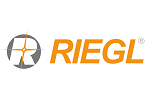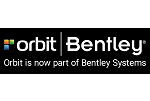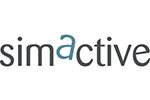GIS Ostrava 2022
Earth Observation for Smart City and Smart Region
16th - 18th
March 2022 
Ethical standards
1. Publication and authorship
The paper must include a list of references. Their content, form and structure must respect the international citation standards ISO 690 and ISO 690-2. Guidelines for the authors provide examples for usual citation situations.
All authors are obliged to respect copyright laws and publication’s ethical principles against plagiarism. The expression of original ideas is considered intellectual property and is protected by copyright laws, just like the original inventions. Almost all forms of expression fall under the copyright protection laws as long as they are recorded in some way (such as a book or a computer file). Plagiarism is the act of taking another person's writing, conversation, song, or even idea and passing it on as your own. This includes information from web pages, books, songs, television shows, email messages, interviews, articles, artworks or any other mediums. Whenever you paraphrase, summarize, or take words, phrases, or sentences from another person's work, it is necessary to indicate the source of the information within your paper using an internal citation. It is not enough to just list the source in a bibliography at the end of your paper. Failing to properly quote, cite or acknowledge someone else's words or ideas with an internal citation is plagiarism. Do not forget to cite unpublished sources (e.g. papers in press or personal communications).
Most cases of plagiarism can be avoided by citing sources. Simply acknowledging that certain material has been borrowed and providing your audience with the information necessary to find that source is usually enough to prevent plagiarism. In the case of copyrighted material it is necessary to obtain the permission to use this source.
It is strictly forbidden to publish the same manuscript more times. When submitting your manuscript for publishing you cannot submit the same manuscript for any other publication until your manuscript is definitely rejected for publishing. In the case of resubmitting you should provide information about previous submissions (i.e. name of journal, reviewer comments) to editors.
It is recommended to acknowledge all organisations/persons that provided support for your activities presented in the manuscript. Especially financial support and/or data providers should be properly referred (using the full name and identification of the source).
2. Author's responsibilities
- All authors must significantly contribute to the concerned published research.
- All authors are required to confirm that the manuscript has been submitted solely to our publication and is not published, in press, or submitted elsewhere.
- All authors are required to deliver a signed copyright declaration in time, which confirms that this article is original, except for quotations from other authors' works, as well as the contribution does not contain any libellous statements and does not infringe any copyrights, trademarks, patents or other rights of third persons and that all information in the article is authentic and real.
- Authors are obliged to participate in peer review process. It means to communicate with editors (members of the organizing and programme committees), respond to all the comments and suggestions of reviewers and follow all deadlines.
- All authors are obliged to provide retractions or corrections of mistakes.
3. Peer review / responsibility for the reviewers
The review process is anonymous, the author does not know who will review his work, and vice versa, the reviewer does not know the author of the publication which is being reviewed. The task of the reviewer is to assess professional quality and originality of the paper and remind his shortcomings and recommend or not recommended paper for publication. The comments from the reviewer are communicated to the author by editors. According to them, the paper must be repaired and completed.
Peer reviewers should:
- only agree to review manuscripts for which they have the subject’s expertise required to carry out a proper assessment and which they can then assess in a timely manner
- respect the confidentiality of peer review and not reveal any details of a manuscript or its review, during or after the peer-review process, beyond those that are released in the publication
- not use information obtained during the peer-review process for their own or any other person’s or organization’s advantage, or to disadvantage or discredit others
- declare all potential conflicting interests. Reviewers cannot be in conflict of interest in relation to the author or subject funding the research. A reviewer cannot solely be the editorial staff or employees of the publisher, in the case of multiple reviewers, reviewers cannot be employees of the same department, or members of the same workplace as the author of the article. Ask advice from editors if you are unsure whether something constitutes a relevant interest.
- not to allow their reviews to be influenced by the origins of a manuscript, by the nationality, religious or political beliefs, gender or other characteristics of the authors, or by commercial considerations
- be objective and constructive in their reviews, refrain from being hostile or inflammatory and from making libellous or derogatory personal comments
- critiques or compliments must be specific and the appropriate explanation must be provided. Before writing a criticism or a compliment, double-check your facts. If you cannot verify something, do not judge it.
- do not miss anything important, but try to be brief and stay on point
- subjective opinion of the reviewer, it is also a suitable supplement, but it should be clearly stated that it is their own subjective impression
- reviewers should point out relevant published work which is not yet cited
- acknowledge that peer review is largely a reciprocal endeavour and undertake to carry out their fair share of reviewing in a timely manner
- provide journals with personal and professional information that are accurate and a true representation of their expertise
- recognize that impersonation of another individual during the review process is considered serious misconduct.
4. Editorial responsibilities
- Editors have complete responsibility and authority to reject/accept an article.
- Editors are responsible for the content, form and overall form of the publication.
- Editors are responsible for everything that is published, and therefore must take all reasonable measures to ensure the quality and accuracy of the publication.
- Editors provide guidelines for reviewers on everything that is expected of them. These guidelines are updated regularly.
- Editors should have no conflict of interest with respect to articles they reject/accept.
- Only accept a paper when reasonably certain.
- When errors are found, promote publication of correction or retraction.
- Preserve anonymity of reviewers.
- The editors periodically revise the instructions for authors to ensure that they are actual and clearly define what is expected of the authors, and what editor will do in cases of suspected misconduct, such as plagiarism or distortion (presentation) false information.
- Decision of editors on acceptance or rejection of the papers for publication should be based only on the basis of quality, originality and correctness of data in the paper and also on the relationship contribution to the publications.
5. Publishing ethics issues
- Editorial Board ensure the monitoring and protection of copyright and ethics.
- Prepare the instructions for authors and the instructions for rejection of the papers.
- Maintain the integrity of the academic record.
- Preclude business needs from compromising intellectual and ethical standards.
- Always be willing to publish corrections, clarifications, retractions and apologies when needed.
- Articles of suspected plagiarism and false information will be rejected and the authors will be unable to publish in that publication.
Ostrava, Czech Republic
References:
- 1. Etika psaní odborného textu a jak citovat. [online]. [cit. 2013-06-17]. Available at: http://www.amu.cz/cs/pro-studenty/bakalarske-a-magisterske-prace/tvorba/etiketa-citace
- 2. COPE Ethical Guidelines for Peer Reviewers. [online]. 2013 [cit. 2013-06-17]. Available at: http://publicationethics.org/files/Ethical_guidelines_for_peer_reviewers_0.pdf
- 3. RETRACTION GUIDELINES. [online]. 2009 [cit. 2013-06-17]. Available at: http://publicationethics.org/files/retraction%20guidelines.pdf
- 4. A SHORT GUIDE TO ETHICAL EDITING FOR NEW EDITORS. [online]. 2011 [cit. 2013-06-17]. Available at: http://publicationethics.org/files/short guide to ethical editing for new editors.pdf
- 5. CODE OF CONDUCT AND BEST PRACTICE GUIDELINES FOR JOURNAL EDITORS [online]. 2011 [cit. 2013-06-17]. Available at: http://publicationethics.org/files/Code_of_conduct_for_journal_editors_1.pdf














